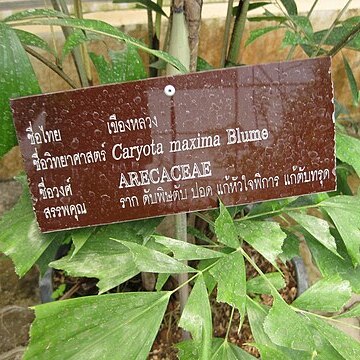Stems solitary, to 30 m tall, 25-64 cm in diam., columnar. Leaves borne along upper half of stem; petioles 8-30 cm; rachis 2.7-4.2 m; primary pinnae to 27 per side of rachis, pendulous; secondary pinnae 12-27 per side of secondary rachis, with deeply jagged margins. Inflorescences borne among leaves, to 3.5 m; rachillae 80-170, 1.5-2.1 m; male flowers to 15 mm; sepals ca. 5 mm; petals yellowish, 12-15 mm; stamens 80-100; female flowers to 10 mm; sepals ca. 5 mm; petals 6-8 mm. Fruits dull reddish or orange, globose, to 2.5 cm in diam., 1-seeded.


